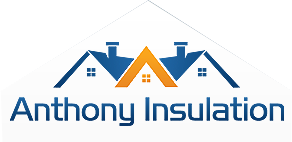Choosing the Right Insulation Material for your Attic
Are you thinking of insulating your Calgary home attic yourself? You will have very few limited options to you, with the blanket-type insulative material being the easiest one to work with. You will however have to be careful that you don’t compress it too much. It is however recommended that you should seek professional installation services for any type of home insulation.
Loose fill and spray foam insulation are the latest and most effective techniques/materials used in homes. This guide will provide you valuable information so that you will have some prior knowledge before you approach an insulation contractor.
Loose Fill Insulation
Also referred to as blown-in insulation, loose fill insulation involves the use of machine for “shooting” loose-fill cellulose on the attic floor frame. The advantage can be easily seen. The material will easily fill in all the crevices and corners.
There are many advantages of using cellulose:
– It is an eco-friendly material
– It is extremely affordable (much more cheaper than spray foam)
– It is highly resistant to fire (therefore it can be used in more sensitive areas around the attic)
– It is also resistant to pests like insects
– Cellulose is also resistant to mold
Specially designed machines can release small chunks of the insulation material onto any surface. The mechanism relies on using air for blowing the chunks. Cellulose and fiberglass are the two most commonly used materials in this type of insulation.
Both cellulose and fiberglass have almost same R-values. While cellulose is made from recycled newspaper, fiberglass is manufactured from sand. The unique advantage to fiberglass is that it has far higher insulative power in blown form than in batt forms.
Sprayed Foam PU Insulation
Spray foam PU materials are second only to blown-in insulation materials. They make the perfect choice if you have plans to create living space out of your attic. There are many advantages of using this type of attic insulation:
– Spray foam has the highest R-value among almost all insulation materials
– It is highly effective in blocking water vapor
– It can be molded to rafters
The only drawback to spray foam insulation is that it is expensive. It can cost you almost two times what blown-in materials can cost. Spray foam insulation is available in two types – closed cell and open cell, an each one has its own set of advantage and drawbacks.
One of the main advantages of using spray foam is that it makes it easier to push the building’s envelope. For example, you could move the envelope from the floor of the attic to the roof line. Many homes have their heating/cooling systems and ducts installed in the attic, which is not the best place to keep them. But spray foam insulation can help move the envelope to the roof line and set off this drawback.
Thus, sprayed foam attic insulation can bring your HVAC system and ducts within the building envelope without the need for redesigning the system or your home. This could save you thousands of dollars in both energy consumption and in any re-construction project.
Other Options for Attic Insulation
In addition to spray foam and loose fill insulation options for your attic, there are several other choices. This includes:
– Mineral Wool – This material is available in panels and batters and is especially designed for use around chimneys.
– Fiberglass Batts – This type of insulation material is available in batts in various thicknesses.
As already mentioned, whichever material you choose as insulation for your attic, make sure to seek professional help of a home insulation contractor.


